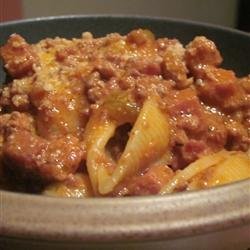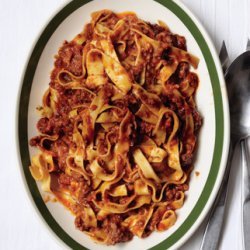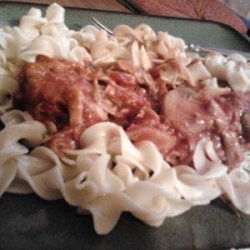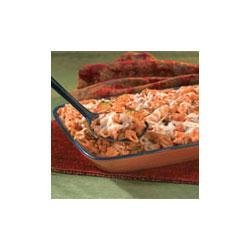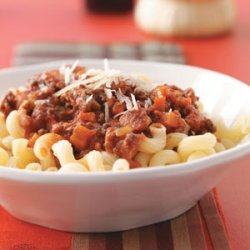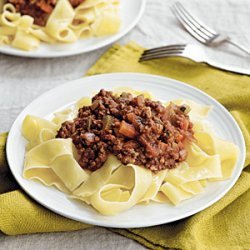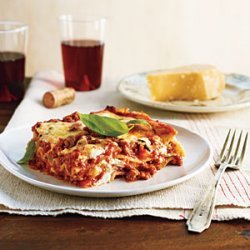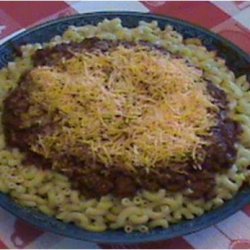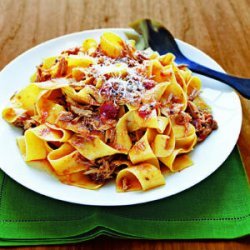Directions:
- Fettucine with Ragu alla Bolognese
- By Domenica Marchetti
- Read reviews (3)
- In historically wealthy Emilia-Romagna, ragù is made from a combination of ground meats—beef, veal, and pork—and enriched with milk and cream. Ragù alla Bolognese, which originated in Bologna, in the heart of the region, is a perfectly delicious example. In this version, mortadella, a smoked beef and pork sausage, brings even more rich flavor to the pot.
- Serves 4 to 6
- Yields about 1 quart of ragu
- Mortadella
- Ground veal
- Fettuccine
- More
- Tbs. extra-virgin olive oil
- Tbs. unsalted butter
- Medium carrots, finely chopped
- Medium celery stalks, finely chopped
- Medium cloves garlic, minced
- Large yellow onion, finely chopped
- Tbs. minced fresh flat-leaf parsley
- Lb. ground beef
- /2 lb. ground pork
- /2 lb. ground veal
- Cup dry white wine, such as Soave Classico
- Pinch of freshly grated nutmeg
- Kosher or fine sea salt and freshly ground black pepper
- /4 cup whole milk
- Tbs. tomato paste
- -1/2 cups lower-salt beef broth
- /2 cup heavy cream
- Oz. thinly sliced mortadella, cut into 1/4-inch-wide strips (1/2 cup)
- Lb. regular or spinach fettucine
- Freshly grated Parmigiano-Reggiano or Pecorino Romano, for serving (optional)
- Make the ragu
- Heat the oil and butter in a 5- to 6-quart Dutch oven or other heavy-duty pot over medium heat until the butter melts and begins to sizzle. Stir in the carrots, celery, garlic, onion, and parsley. Reduce the heat to medium low and cook, stirring frequently, until the vegetables are soft and light golden, about 10 minutes. Add the beef, pork, and veal and mix well with a wooden spoon or spatula to break up the clumps. Cook, stirring frequently and scraping the bottom of the pot until the meat is deep brown and crumbly but still tender and not dry, 60 to 90 minutes—if the meat is browning too quickly, reduce the heat to low.
- Raise the heat to high, stir in the wine and cook, scraping the bottom of the pan until it is almost evaporated, 1 to 2 minutes. Reduce the heat to medium and season the meat with the nutmeg, 1/2 tsp. salt, and several grinds of pepper. Stir in the milk and cook, stirring frequently, until most of it is absorbed, 2 to 3 minutes.
- Dilute the tomato paste in a small bowl with a splash of the broth and pour it into the sauce. Mix well and then add the remaining broth. Reduce the heat to low, cover partially, and cook the sauce at a gentle simmer, stirring occasionally, until it is thick and fragrant and the vegetables have more or less dissolved, 1 to 1-1/2 hours. Stir in the cream and mortadella and simmer gently until completely heated through, about 5 minutes more. Season to taste with salt and pepper.
- Cook the pasta and serve
- Tip: Resist the urge to rush the meat through browning—it takes 60 to 90 minutes to do this step properly, but your patience will be rewarded with a rich, deeply flavored sauce.
- When ready to serve, bring a large pot of well salted water to a boil. Cook the pasta until al dente—you want it to still have some bite because it will continue to cook a bit while you’re tossing it with the ragù. Reserve about 1 cup of the cooking water and then drain the pasta. Return it to the pot and toss it with some of the ragù, adding a little cooking water if it seems dry. Serve the pasta with more ragù spooned over the top, garnished with freshly grated Parmigiano-Reggiano or Pecorino Romano, if you like.
- Make ahead tips
- The ragù can be refrigerated in an airtight container for up to 3 days or frozen for up to 3 months. Reheat it gently before tossing it with pasta.
- Variations
- While fresh spinach fettucine is the classic pasta paring for this sauce, you can subsitute regular fettucine or tagliatelle.
Nutrition Facts
| Amount Per 1 Serving | |||
| Calories | 0 Kcal (0 kJ) | ||
| Calories from fat | 0 Kcal | ||
| % Daily Value* | |||
| Total Fat | 0g | 0% | |
|---|---|---|---|
| Amount Per 100 g | |||
| Calories | 0 Kcal (0 kJ) | ||
| Calories from fat | 0 Kcal | ||
| % Daily Value* | |||
| Total Fat | 0g | 0% | |
|---|---|---|---|
* Percent Daily Values are based on a 2000 calorie diet. Your daily values may be higher or lower depending on your calorie needs.
Find out how many calories should you eat.
Get Your Recipe of Health!
Follow RecipeOfHealth on Facebook!


